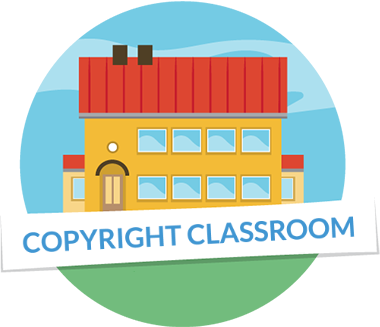Cultural project
Prepared by: Sari Auramo and Kirsi Salmela, adapted and edited by ICLA

Project goal
The goal of the project is to present Irish works (books, music, artworks, or similar) to a foreign partner school and study the works presented by the partner school from their country. The wider aim is to guide students to familiarise themselves with various creative industries, use and produce their own texts, enjoy them, and express themselves through them. In the project, students also learn about copyright and its application in their own work.
This cultural project ties into the NCCA’s Senior Cycle Key Skills: information processing, communicating, being personally effective, working with others, and critical and creative thinking (see below).
What do the students do in the project?
- They get to know the literature, music, and art of their home country.
- They present the books, music, and artwork they have chosen to their partner school.
- They get to know the literature, music, and art of the partner school’s country.
Learning objectives:
The workshop aims to foster cultural awareness by helping students to understand and appreciate Irish art and culture, as well as compare it with cultures from other countries. It develops research and information literacy skills as students gather information about various Irish art forms and artists, using libraries and online resources effectively. Presentation and communication skills are enhanced through the creation and sharing of multimedia presentations such as book trailers or PowerPoint slides, promoting effective communication with peers and partner schools. The workshop also emphasises copyright awareness, teaching students the importance of respecting intellectual property and properly referencing their sources. Additionally, it cultivates critical thinking and analysis by encouraging students to discuss and analyse themes, styles, and contexts within Irish art, and to compare these elements with those from other cultures.
Key skills: information processing and critical thinking from reading/watching/listening to, understanding and responding to Irish and overseas artistic works; communicating ideas through descriptive writing and visual elements; an opportunity to test personal effectiveness in a cross-cultural setting; working with others by developing the presentation to the partner school.
The project:
- Inspires students to learn about Irish literature, music, and art and the creators within these fields, and encourages them to explore new forms of literature, music, and art.
- Encourages students to observe art, the environment, and other visual cultures using multiple senses and by creating images.
- Encourages students to develop their language skills and imagination by expressing themselves visually and verbally.
- Encourages students to use various ways to produce and present information and ideas.
- Guides students to produce narrative, descriptive, and other texts in a multimedia environment.
- Teaches students to understand and respect copyright in their own projects.
- Encourages students to use a foreign language and improve their language skills also by using information and communication technology.
- Teaches students to use various communication systems and applications.
- Develops skills in group work and interaction.
Project Planning
Finding and choosing a project partner
For international projects, the school can find a project partner via, for example, Leargas’ eTwinning platform.
Choosing a project platform
The results produced in the project are shared on a suitable platform on the internet. The platform should be easily accessible to all participants. It’s preferable if at least some of the material can be stored in a password-protected environment.
For international eTwinning projects, the project platform TwinSpace can be used. If the project only has Irish participants another platform provided by the school can be used.
Project parameters
The parameters for cooperation can be created by collecting the students’ thoughts on what is and isn’t allowed in the project together with the partner school. Both schools compile students’ thoughts on the following themes:
- Courtesy, comments, objectivity
- Personal responsibility (diligence, doing one’s best)
- Rules for group work
- Copyright (me as an author), use of works created by others, and respect for copyright (images, text, and music)
- Language used for presentation
- Areas/topics of sensitivity (these may be different in different countries).
Teachers exchange information on the most important points raised at each school and make a final decision on which will be adopted as rules. The students can draw a poster with the adopted rules, which can be displayed on the project website.
Preparations for the project
First, together with the students, consider the different types of creator in creative and artistic works, what kinds of works they create, and which Irish creators and famous works the students know.
Discuss copyright
- what does it mean?
- who owns copyright?
- what kinds of works are protected by copyright?
For teaching and learning about copyright, you can use materials from the Copyright Classroom, such as games and quizzes, project work checklists and the checklist generator.
The students introduce themselves to the partner school’s students. They can write short introductory letters to the other students or make a short video where they talk about the class, the school, and Ireland.
LITERATURE PROJECT
1. Introduction to the project and group formation
Activities:
- Brief introduction to the project’s goals and activities.
- Divide the students into groups of 3-4.
- Each group selects an Irish book to study.
2. Research and exploration
Objective: Conduct research on selected books and authors.
Activities:
- Visit the library or use online resources to gather information about the selected books and authors.
- Students note down key facts, including the author’s biography, the number and types of books published, translations, and the main themes of the chosen book. When was the book written? How as it received at the time? Many of Ireland’s most famous books were banned when first published though they are now recognised as culturally significant.
3. Creating presentations and book trailers
Objective: Create engaging presentations about the selected books.
Activities:
- Students create PowerPoint presentations or book trailers using the information that has been gathered.
- Ensure students follow copyright best practice and reference their sources properly.
- Provide students with templates and examples from Copyright Classroom for guidance.
Instructions for Book Trailers
4. Understanding copyright
Objective: Learn about copyright.
Activities:
- Discuss the importance of copyright for authors.
- Review how to reference sources correctly and the legal use of borrowed content.
- Use real examples from the selected books to illustrate points.
- Consider how copyright law varies between countries and whether there are significant differences between Ireland and the partner school’s country for literary works. Does the partner school’s country have a licensing scheme like ICLA’s?
5. Presentation
Objective: Present and share findings with peers and partner schools.
Activities:
- Each group presents their PowerPoint or book trailer to the class.
- Record presentations to share with the partner school on the selected project platform.
6. Discussion and comparison
Objective: Compare and contrast literary elements across cultures.
Activities:
- Watch and discuss presentations from the partner school.
- Discuss the similarities and differences in themes, characters, and settings between Irish literature and literature from the partner school’s country.
7. Reflection and feedback
Objective: Reflect on the learning experience and provide feedback.
Activities:
- The students reflect on what they have learned about Irish literature and the research process.
- Collect feedback on the workshop and discuss any improvements for future projects.

Example of information to look for about the author and the book:
- When and where did the author live?
- How many books have they published?
- What types of books have they published (children’s or young adult books, novels, detective stories, science fiction, poems, comics, non-fiction, biographies, historical novels, etc.)?
- Have their books been translated into other languages?
- What is the chosen book about?
- What is the main character like?
- What is the historical context for the book when it was published – what was going on in the world at that time?
MUSIC PROJECT
1. Introduction to the project and group formation
Objectives:
- To introduce students to Irish music across various genres.
- To engage students in collaborative research on Irish music creators.
Activities:
- Introduction to the project
- Brief introduction to Irish music and its genres (pop, rock, hip-hop, rap, traditional Irish music and classical music).
- Divide students into small groups.
- Each group selects a different Irish music genre to research.
2. Research and exploration
Objective: Conduct research on selected music genres and creators.
Activities:
- Groups search for Irish composers, lyricists, singers, instrumentalists and bands within their chosen genre.
- Compile information and select a creator or group for their project.
3. Creating presentations
Objective: Create engaging presentations about the selected music and artists.
Activities
- Students create PowerPoint presentations with links to sound recordings using the information gathered.
- Ensure students follow copyright best practice and reference their sources properly.
- Provide students with templates and examples from Copyright Classroom for guidance.
4. Understanding copyright
Objective: Learn about copyright and correct referencing.
Activities:
- Discuss what copyright means for music creators and their compensation.
- Review how to reference sources correctly and the legal use of text, images and music in their own work.
- Consider how copyright law varies between countries and whether there are significant differences between Ireland the partner school’s. Does the partner school’s country have a copyright exception for education?
5. Presentation
Objective: Present and share findings with peers and partner schools.
Activities:
- Each group presents their project on Irish music creators to the class.
- Record presentations to share with the partner school on the selected project platform.
6. Discussion and comparison
Objective: Compare and contrast musical elements across cultures.
Activities:
- Watch and discuss presentations from the partner school.
- Discuss cultural reflections in music.
- Compare the music preferences of the students in both countries.
- Identify any familiar composers, singers, or bands from the partner school’s presentations. Have you discovered new artists you really like from the partner school’s country?
7. Reflection and Feedback
Objective: Reflect on the learning experience and provide feedback.
Activities:
- The students reflect on what they have learned about Irish music and the research process.
- Collect feedback on the project and discuss any improvements for future projects.

Tip:
Consider what copyright means for music creators and how creators can be compensated for their work. Students can also contact, for example, a music publisher or a music creator and ask what copyright means to them.
ART PROJECT
1. Introduction to the project and group formation
Objective: Introduce students to classical and contemporary Irish art and set the context for the project.
Activities:
- Presentation on Irish art history and notable Irish artists.
- Discuss the importance of art in reflecting cultural and environmental aspects.
- Students form groups of 3-4 and choose an Irish artist. Endeavour to represent a spectrum of periods and genres.
2. Research and exploration
Objective: Develop research skills and gather information on selected Irish artists.
Activities:
- Guided online search on the National Gallery of Ireland, Irish Museum of Modern Art (IMMA), the Hugh Lane Gallery, and Irish Art Plus websites.
- Visit a local art gallery (if possible) to see real examples of art.
- The groups collect information such as details of the artist’s life, art movement, notable works, and where their art is displayed. How was their art received at the time it was created? Were they commercially successful at the time?
3. Creating presentations
Objective: Create engaging presentations about the selected artist and their artworks.
Activities:
- Students create PowerPoint presentations or equivalent, incorporating text, images, and references.
- Use applications like PhotoCollage or PhotoJoiner to create a visual collage of the chosen artist’s works. Ensure the collage highlights key aspects of the artist’s style and contributions. You can do this under your ICLA licence provided the partner school holds a similar licence that includes Irish works. Otherwise, link to artworks on websites such as the National Gallery of Ireland.
- Ensure students follow copyright best practice and reference their sources properly.
- Provide students with templates and examples from Copyright Classroom for guidance.
4. Understanding copyright
Objective: Learn about copyright.
Activities:
- Discuss the importance of copyright for artists.
- Review how to reference sources correctly and the legal use of borrowed content.
- Consider how copyright law varies between countries and whether there are significant differences between Ireland the partner school’s. Does the partner school’s country have a licensing scheme like ICLA’s that includes visual works? Does it have an artist’s resale right?
5. Presentation
Objective: Present and share findings with peers and partner schools.
Activities:
- Each group presents their project to the class.
- Record presentations to share with the partner school on the selected project platform.
6. Discussion and comparison
Objective: Compare and contrast artworks and styles across cultures.
Activities:
- Watch and discuss presentations from the partner school.
- Discuss the similarities and differences in themes, characters, and settings between Irish artworks and artworks from the partner school’s country.

Tip:
Consider what copyright means for artists and how creators can be compensated for their work. Students can also contact, for example, an artist and ask what copyright means to them.
